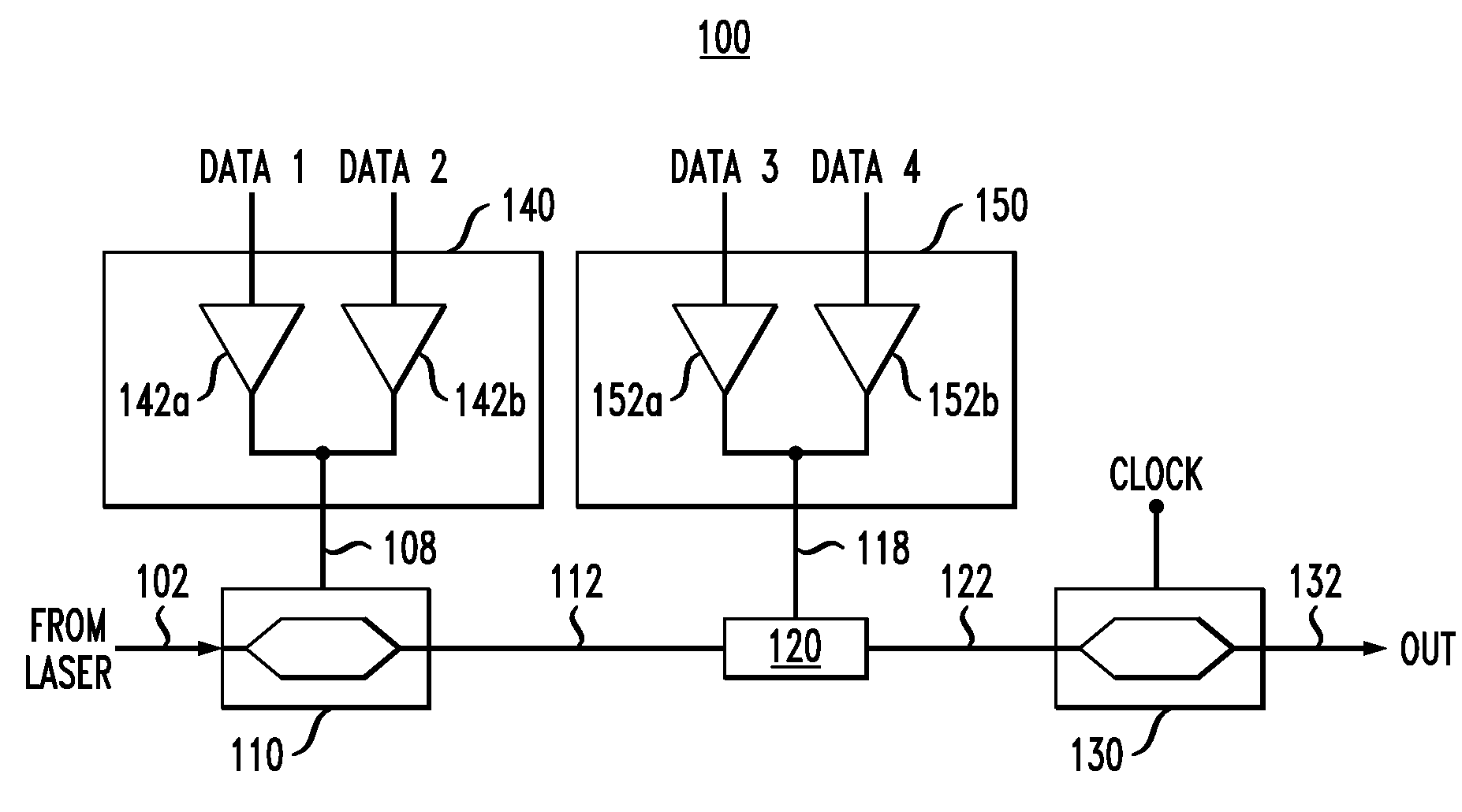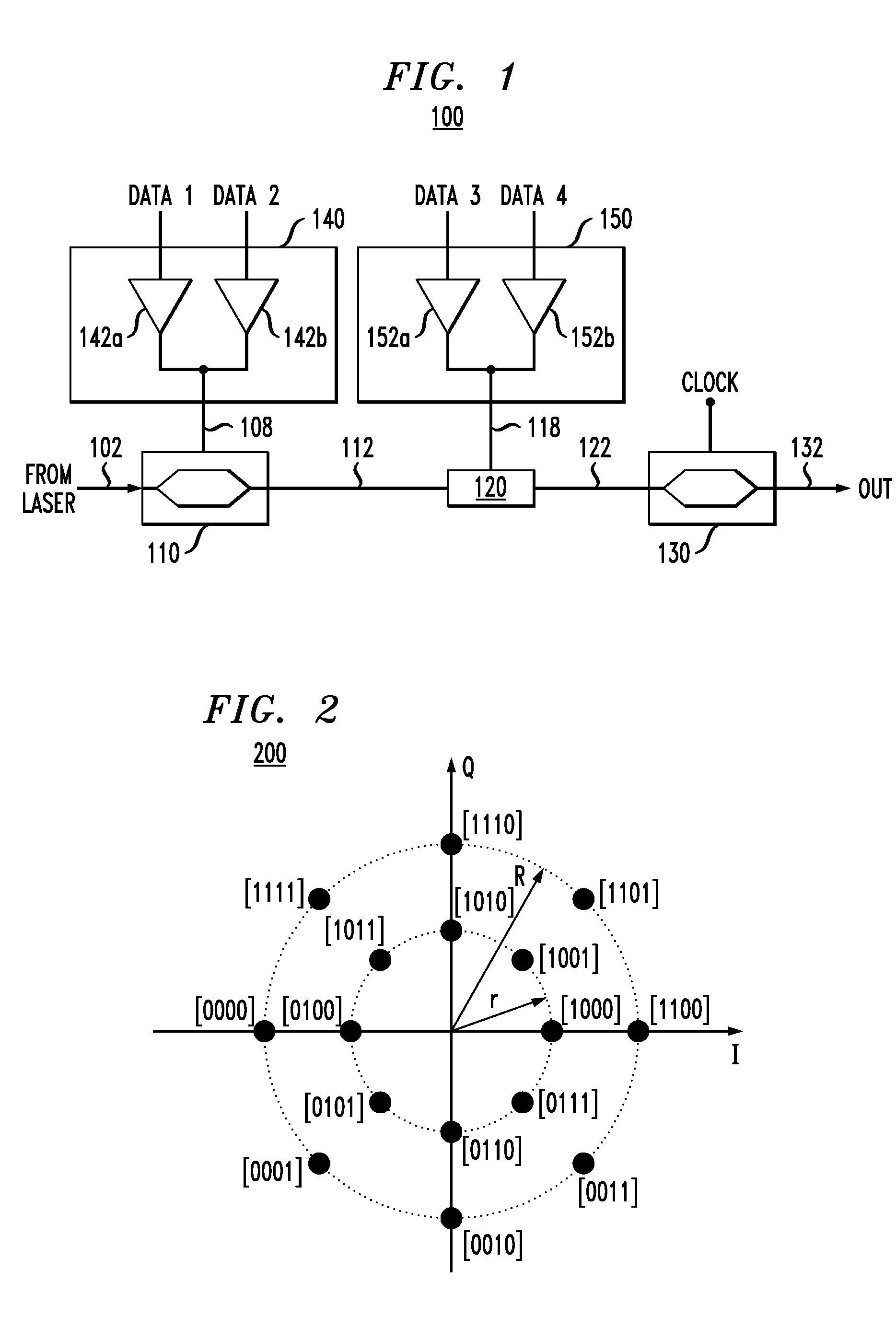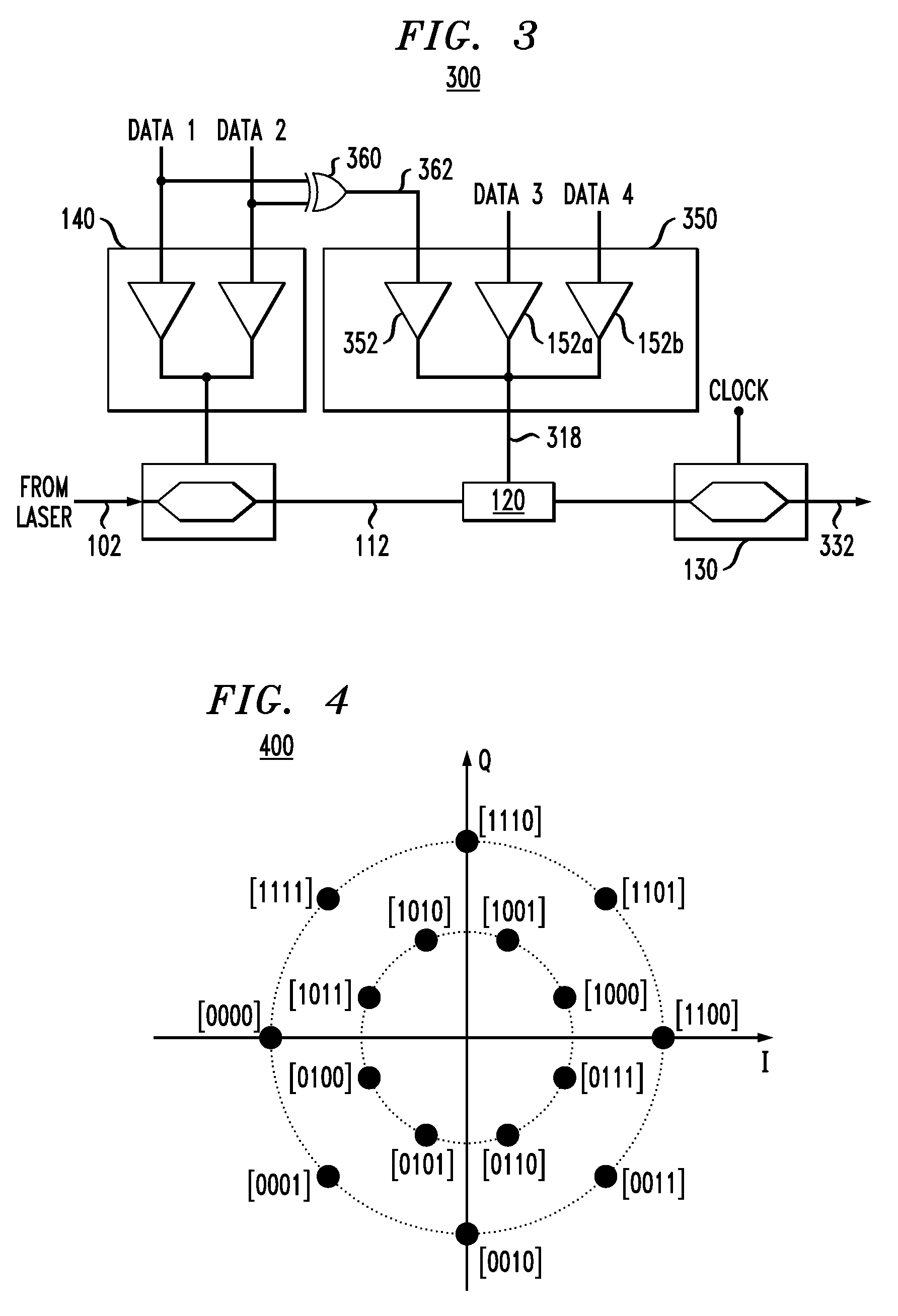Optical modulator for higher-order modulation
a technology of optical modulators and optical modulators, applied in the field of optical communication equipment, can solve the problems of ineffective cost, high complexity of optics and electronics involved in the implementation of prior-art higher-order optical modulators, and inapplicability of those optical modulators
- Summary
- Abstract
- Description
- Claims
- Application Information
AI Technical Summary
Problems solved by technology
Method used
Image
Examples
Embodiment Construction
[0021]FIG. 1 shows a block diagram of a higher-order optical modulator 100 according to one embodiment of the invention. Modulator 100 receives four electrical binary signals Data 1 . . . Data 4 and generates a corresponding modulated optical output signal 132. Signal 132 can be classified as a 2-ASK / 8-PSK signal, where the acronyms 2-ASK and 8-PSK stand for binary amplitude-shift keying and 8-ary phase-shift keying, respectively.
[0022]FIG. 2 graphically shows a star 16-QAM constellation 200 corresponding to signal 132. Constellation 200 has (i) eight constellation points arranged on a circle of radius r and (ii) eight constellation points arranged on a circle of radius R, where R>r. The angular separation between adjacent constellation points on each of the circles is 45 degrees. Four constellation points of constellation 200 fall on the in-phase (I) axis, and four other constellation points fall on the quadrature-phase (Q) axis. The bracketed binary values placed next to each cons...
PUM
 Login to View More
Login to View More Abstract
Description
Claims
Application Information
 Login to View More
Login to View More - R&D
- Intellectual Property
- Life Sciences
- Materials
- Tech Scout
- Unparalleled Data Quality
- Higher Quality Content
- 60% Fewer Hallucinations
Browse by: Latest US Patents, China's latest patents, Technical Efficacy Thesaurus, Application Domain, Technology Topic, Popular Technical Reports.
© 2025 PatSnap. All rights reserved.Legal|Privacy policy|Modern Slavery Act Transparency Statement|Sitemap|About US| Contact US: help@patsnap.com



